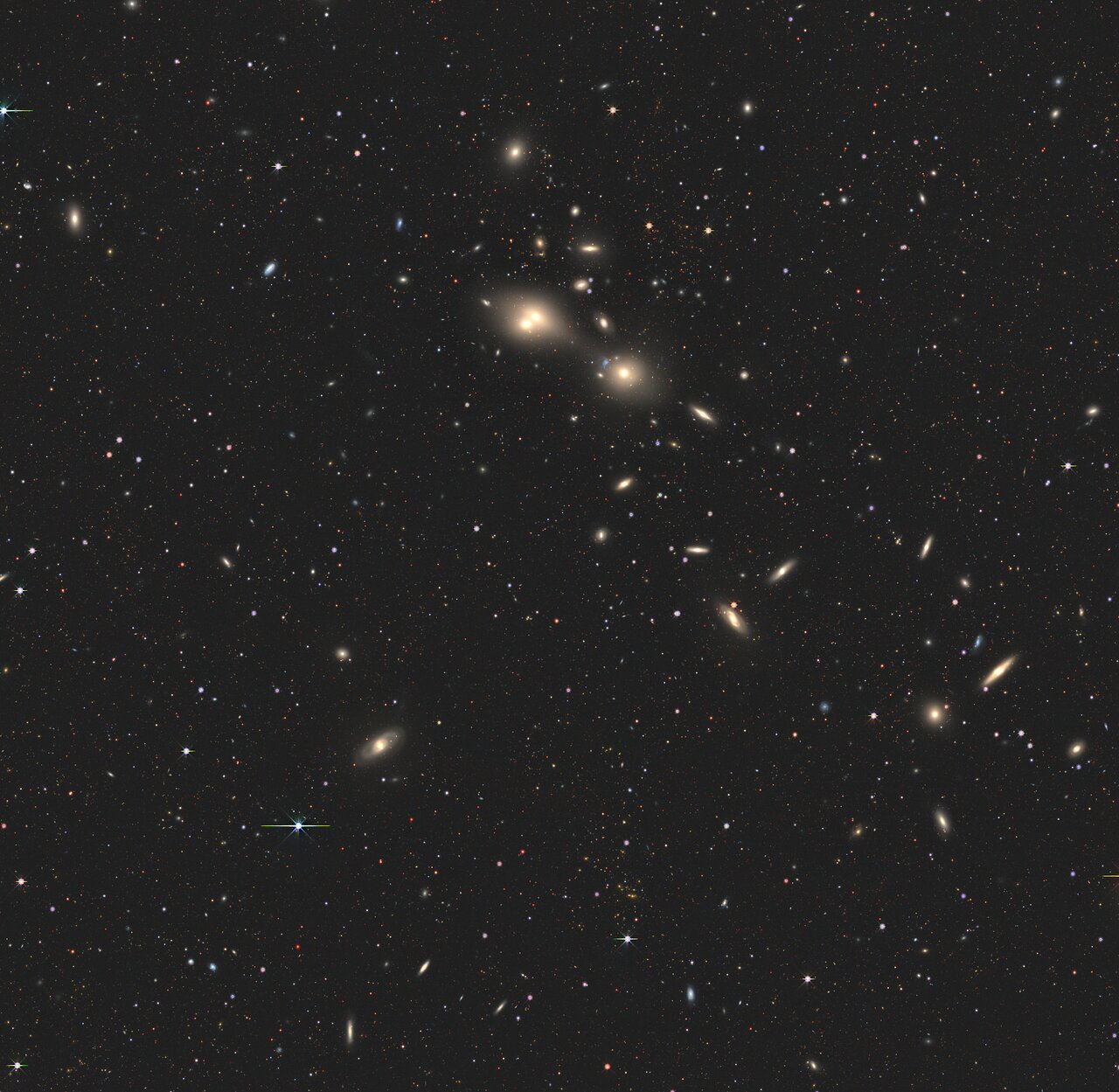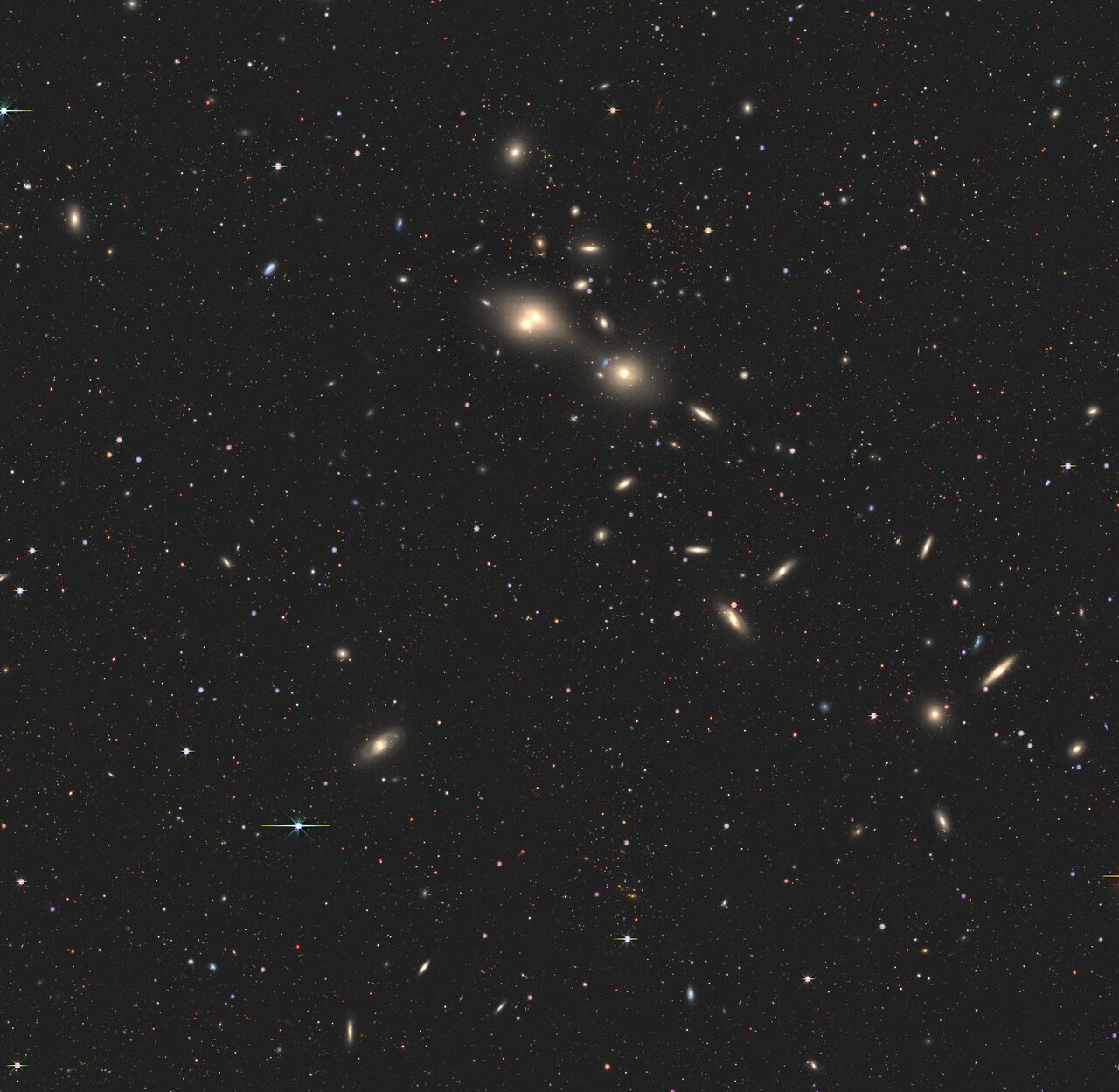Now Reading: Scientists spot high-speed galaxy collision 11 billion light-years away: ‘We hence call this system the cosmic joust’
-
01
Scientists spot high-speed galaxy collision 11 billion light-years away: ‘We hence call this system the cosmic joust’
Scientists spot high-speed galaxy collision 11 billion light-years away: ‘We hence call this system the cosmic joust’

Using a telescope in Chile, astronomers have captured a high-speed collision between two galaxies located more than 11 billion light-years away, getting a rare direct glimpse into how the universe’s most luminous sources of energy, known as quasars, can sculpt their surroundings and influence the evolution of galaxies.
The new findings describe a galactic battle between the galaxy on the right in the image above, which hosts an actively feeding black hole, a quasar, at its center, and its neighbor on the left, which is being bombarded by intense radiation that disrupts its ability to form new stars.
“We hence call this system the ‘cosmic joust,'” Pasquier Noterdaeme, a researcher at the Institut d’Astrophysique de Paris in France, who co-led the new study, said in a statement.
Named J012555.11−012925.00, the quasar is generally so bright that it outshines its surroundings, dominating optical images as a single point of light. However, using the Atacama Large Millimeter/submillimeter Array (ALMA), a network of 66 radio dishes in the Chilean Andes working together as one giant telescope, astronomers were able to distinguish the second galaxy.
The observations revealed the companion galaxy is moving toward the quasar-hosting galaxy at about 1.2 million miles per hour (2 million kilometers per hour), indicating the two are in the midst of a high-speed collision.

To study how the quasar’s radiation affects the companion galaxy, the researchers used the X-shooter instrument on the Very Large Telescope (VLT), also located in Chile. By analyzing the quasar’s light as it passed through the other galaxy, they found the radiation blasts apart the gas in the companion galaxy, leaving behind compact cloudlets that are too small to form new stars.
Related Stories:
“We see for the first time the effect of a quasar’s radiation directly on the internal structure of the gas in an otherwise regular galaxy,” Sergei Balashev, a researcher at the Ioffe Institute in Russia, who co-led the study, said in the statement.
The gravitational forces at play are also pulling more gas toward the black hole, allowing it to continue feeding and powering the quasar, the study found.
“These mergers are thought to bring huge amounts of gas to supermassive black holes residing in galaxy centres,” said Balashev.
The study was published on Wednesday (May 21) in the journal Nature.
Stay Informed With the Latest & Most Important News
Previous Post
Next Post
-
 012024 in Review: Highlights from NASA in Silicon Valley
012024 in Review: Highlights from NASA in Silicon Valley -
 02Panasonic Leica Summilux DG 15mm f/1.7 ASPH review
02Panasonic Leica Summilux DG 15mm f/1.7 ASPH review -
 03How New NASA, India Earth Satellite NISAR Will See Earth
03How New NASA, India Earth Satellite NISAR Will See Earth -
 04And Thus Begins A New Year For Life On Earth
04And Thus Begins A New Year For Life On Earth -
 05Astronomy Activation Ambassadors: A New Era
05Astronomy Activation Ambassadors: A New Era -
06SpaceX launch surge helps set new global launch record in 2024
-
 07From Polymerization-Enabled Folding and Assembly to Chemical Evolution: Key Processes for Emergence of Functional Polymers in the Origin of Life
07From Polymerization-Enabled Folding and Assembly to Chemical Evolution: Key Processes for Emergence of Functional Polymers in the Origin of Life




















